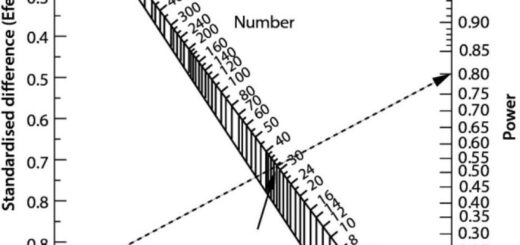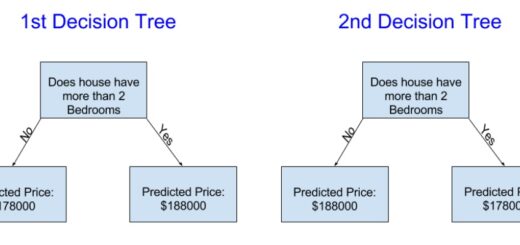Best Data Science Books For Beginners
Best Data Science Books For Beginners, One of the most popular fields is data science. The field of data science pays well. Everyone is attempting to enter the field of Data Science.
There are numerous resources accessible to learn Data Science. Courses, books, videos, and a variety of other resources are available. However, reading books is the best way to comprehend the ideas of Data Science if you want to gain in-depth information.
Books provide in-depth knowledge ranging from the fundamentals to higher levels. However, there are numerous books on the market.
We are frequently perplexed when deciding on the ideal literature. That is why, we have chosen the greatest books for you. You don’t have to waste time looking for the greatest book.
Best Data Science Books For Beginners
Programming, Machine Learning, Probability, Statistics, and Linear Algebra are all required skills for becoming a Data Scientist.
1. Data Science from A-Z: Author-Benjamin Smith
About Book-
This book explains everything in clear English. This book is neither either technical or overly straightforward.
However, the goal of this book is to cover subjects that, due to their intrinsic complexity, may otherwise be misconstrued or overlooked by the reader.
In summary, this book contains all of the necessary material for a novice data scientist.
2. Data Science For Dummies: Author- Lillian Pierson, Jake Porway
About Book-
For IT professionals and students who seek a short tutorial on all aspects of the vast data science domain, Data Science For Dummies is the ideal beginning point.
The focus of this book is on business cases. That’s why this book explores the differences between big data, data science, and data engineering, as well as how these three disciplines can be integrated to provide enormous value.
This book will assist you in learning the skills you’ll need to start a new job.
You will have a basic understanding of Big Data and Data Engineering after reading this book.
You’ll also learn Hadoop, MapReduce, Spark, MPP platforms, and NoSQL, as well as other big data frameworks.
This book explains machine learning and many of its algorithms. You will also learn the evolution of the Internet of Things. This book also covers data visualization techniques.
3. Storytelling with Data: Author-Cole Nussbaumer Knaflic
About Book-
The easiest method to learn something is to tell a story. This book is written in the manner of a story. To grasp the topics, Storytelling with Data use images.
The principles of data visualization and how to communicate successfully with data will be taught in Storytelling with Data.
The author uses a storytelling technique to convey complicated issues. You aren’t even aware of how well you comprehend complex things.
You will learn about the context and audience after reading this book. How do you choose the right graph type for your situation?
You will think like a designer after reading Storytelling with Data and will apply design concepts to data visualization.
4. Data Science from Scratch: Author– Joel Grus
About the Book As the title suggests, “Data Science from Scratch” is a book for beginners. This book begins at the very beginning. This is also a good book if you don’t have any Python experience.
Statistics, Linear Algebra, and Probability are all required, as I indicated in Data Science Skills.
As a result, you’ll learn the fundamentals of linear algebra, statistics, and probability in this book.
Additionally, you’ll learn how and when they’re employed in data science.
Programming Language is the next Data Science expertise. As a result, you’ll get a crash course in Python in this book.
Knowledge of Machine Learning is the next data science skill. You will discover the principles of machine learning in this book.
Models such as k nearest neighbors, Naive Bayes, linear and logistic regression, decision trees, neural networks, and clustering will also be covered.
Data Science also necessitates knowledge in data cleaning. You will learn how to collect, explore, clean, manage, and manipulate data in this book.
5. Python Data Science Handbook: Author- Jake VanderPlas
About Book-
A programming language is required for Data Science. Python is the programming language of choice for Data Science.
As a Data Scientist, you will spend the majority of your time manipulating and cleaning data. Pandas can help you with all of these duties.
This manual will teach you how to use:
NumPy: includes the array for efficient storage and manipulation of dense data arrays in Python
Pandas: includes the DataFrame for efficient storage and manipulation of labeled/columnar data in Python
Matplotlib: includes capabilities for a flexible range of data visualizations in Python
Scikit-Learn: for efficient and clean Python implementations.
6. R for Data Science: Author- Hadley Wickham
About Book-
The R programming language is used in this book to conduct data science tasks. In addition, R is the best programming language for Data Science. So, instead of learning Python, you should learn R. If that’s the case, this is the book for you.
This book teaches the fundamentals of R for those who are new to the language. R for Data Science, on the other hand, covers more advanced topics.
You will learn the following from that book:
Exploration, Wrangling, Programming, Modeling, Communication
7. Python for Data Analysis: Author- Wes McKinney
About Book-
This book is ideal for Python programmers who are new to data science and scientific computing as well as analysts who are new to Python.
The first part of this book will teach you the fundamentals of Python programming. The role of Python in data analysis and statistics will next be discussed.
That is why it is suitable for Python newbies. Within a week of finishing this book, you will be able to create real-world applications.
Python for Data Analysis will also help you get started as a Data Analyst or Scientist.
In NumPy, you’ll learn both fundamental and sophisticated features (Numerical Python). You’ll also learn how to address real-world data analysis challenges with examples that are complete and precise.
8. An Introduction to Statistical Learning ( Statistic Book): Author– Gareth James, Daniela Witten, Trevor Hastie, and Robert Tibshirani
About Book-
Statistical knowledge is necessary for Data Science, as I previously stated. As a result, this book provides a solid foundation in statistics. Other statistical books focus on theory, but this book will explain how to use statistics in practice.
This book is meant for folks who aren’t familiar with programming or statistics. Even if you are a seasoned professional, you can use this book to refresh your expertise.
Many statistical concepts are forgotten over time due to their complexity.
This book covers the most important modeling and prediction techniques as well as their applications.
Linear regression, classification, resampling methods, shrinkage approaches, tree-based algorithms, support vector machines, clustering, and more are among the topics covered.
9. Practical Statistics for Data Scientists: Author-Peter Bruce
About Book-
If you’re a newbie, this book is a good place to start. The book Practical Statistics for Data Scientists shows how to use several statistical methods in data science.
Randomization, sampling, distribution, sample bias, and other topics are covered in this book.
All of these ideas are demonstrated by examples. Furthermore, the book illustrates how these notions apply to data science.
This book will provide not only in-depth information but also a quick and easy reference to Data Science.
10. Linear Algebra Done Right: Author- Sheldon Axler
About Book-
This is a math textbook for undergraduates. Linear Algebra is a necessary skill for a Data Scientist. So, if you want to learn the fundamentals of Linear Algebra, this is the book for you.
This book has nothing to do with machine learning or programming. This is a pure mathematics book that will teach you everything you need to know about linear algebra.
After reading this book, you will know everything there is to know about matrices, vector space, and pure math in high-dimensional domains.
11. Introduction to Probability: Author- Joseph K. Blitzstein, Jessica Hwang
About Book-
You should have a basic understanding of probability for Data Science. This is the greatest book to master the fundamentals of probability.
This is the greatest book to brush up on your probability knowledge if you studied it in school. And even if you never learneded Probability, this book will provide you with a solid foundation in the fundamentals.
Many intuitive explanations, pictures, and practice problems are included in the book.
Each chapter concludes with a lesson on how to use R, a free statistical software environment, to do important simulations and calculations.
For nearly five decades, Introduction to Probability has been one of the most popular books.
12. Probability and Statistics for Data Science: Author-Norman Matloff
About Book-
The topics covered in this book include “math stat” distributions, expected value, estimation, and more. Read datasets are utilized in that book. The R programming language is used for all data analysis operations.
For Data Science, Probability and Statistics PCA, mixture distributions, random graph models, Hidden Markov models, linear and logistic regression, and neural networks are just a few examples of Data Science applications.
13. Introduction to Machine Learning with Python: Author- Andreas C. Müller, Sarah Guido
About Book-
This book will get you started on your Python Machine Learning journey. You’ll discover the essential concepts and applications of machine learning in the book.
Advanced methods for model evaluation and parameter adjustment will also be covered.
Methods for working with text data, including text-specific processing techniques, are also covered in this book.
14. Hands-On Machine Learning with Scikit-Learn, Keras, and TensorFlow: Author- Aurélien Géron
About Book-
This book teaches you how to learn by doing in a hands-on manner. It begins with more classic machine learning approaches (the Scikit-learn section), providing a wealth of context and practical tools for solving a wide range of issues. The balance between theory/background and application in this book is outstanding.
This practical book demonstrates how even programmers with little or no experience with this technology may utilize simple, efficient tools to create data-driven programs.
Concrete examples, little theory, and two production-ready Python frameworks—Scikit-Learn and TensorFlow—are used throughout this book.
The first section of the book covers the fundamentals of machine learning algorithms.
Support Vector Machines, Decision Trees, Random Forests, and many other algorithms are available. Each of the algorithms has Scikit-learn examples provided in this book.
The second section explains deep learning ideas using the TensorFlow library.
15. Python for Finance: Author- Yves Hilpisch
About Book-
This book is a must-read for anyone who works in finance or data science. This book explains how to study the financial market using Data Science methods.
Python for Finance is a book that is entirely practical. This was a fantastic read for me. The reason for this is its pragmatic attitude.
This book covers both fundamental concepts like NumPy, Pandas, and Time Series, as well as more advanced topics like machine learning and algorithmic trading methods.
Free Data Science Books » EBooks » finnstats
Conclusion
You’ve uncovered the 15 Best Books on Data Science in this article. We hope that these 15 Best Books on Data Science will assist you in starting or enhancing your Data Science journey.






Thank you for the nice list of books for Data Science. I would like to bring to your attention an easy to read book for Data Scientists:
Hadi, A. S. (1996), Matrix Algebra as a Tool, Belmont, CA: Duxbury Press. ISBN: 0-534-23712-6
Thanks Ali